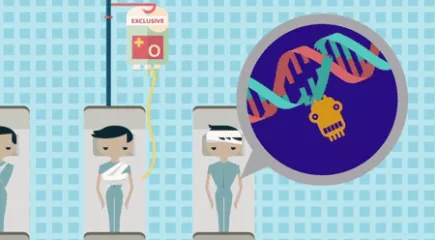- | Healthcare Healthcare
- | Working Papers Working Papers
- |
How the Affordable Care Act Empowers HHS to Cartelize the Health Care Industry
In this paper I explain how the Department of Health and Human Services has taken on a powerful coordinating role in the provision of health care as a result of the Patient Protection and Affordable Care Act. This paper analyzes the unfurling of that act using the Bootlegger–Baptist model of political economy. By tracing the development of the law and its effect on how health care is delivered, the analysis shows that economic interests became coordinated through the efforts of the White House and the central “televangelist” agency, the Department of Health and Human Services. This development will inevitably result in bureaucratic decisions replacing individuals’ choices as the agency takes on an increasingly active and interventionist role in how health care is provided.
The Affordable Care Act (ACA) has brought enormous change to the health care industry, reinventing one-sixth of the US economy through new regulations, fees, grants, and other incentives. Many different interest groups—ranging from consumers of health care to insurance companies, health care providers, hospitals, and pharmaceutical companies—must now adjust to the new system. The Obama administration went to great lengths to ensure that these groups supported reform and cooperated after the law was enacted.
A new study published by the Mercatus Center at George Mason University shows that The Affordable Care Act relied from its inception on a collection of economic and moral interests, all coordinated by the Obama administration and the Department of Health and Human Services (HHS). This kept the law focused enough to generate the necessary benefits to those who needed to be on board while still placating the public’s demand that the law generate wider benefits.
To read the paper in its entirety and learn more about its author, Adam C. Smith, see “How the Affordable Care Act Empowers HHS to Cartelize the Health Care Industry.”
Baptists and Bootleggers: In Theory
Economic and moral interests often team up to generate favorable political outcomes despite very different motivations for reaching the same outcome:
- Economic special interest groups (Bootleggers) will bring a lot of money and effort to the table to guide potential legislation toward a more favorable outcome.
- Moral interests (Baptists) will often enable those Bootleggers—even while intending to oppose them—by settling for outcomes that inevitably favor the special interest groups.
- Political operatives (televangelists) can work both sides of the Bootlegger/Baptist divide to encourage cooperation and can focus the debate on politically attractive objectives.
Baptists and Bootleggers: In Practice
Crafting successful legislation is inherently linked with the groups that participate largely behind the scenes. There is no such thing as reform without special interest groups. The Bootlegger/Baptist model of political economy can illuminate the contours of health care reform as it took place in practice. Many have pointed to the political maneuvering of special interest groups behind the scenes and even more have called attention to the moral benefits of health care reform in general. The model of political economy can help unify these different perspectives and explain why the health care law was enacted.
A year-long struggle to pass the ACA—a key part of the Obama administration agenda—concluded in March 2010, but only after the Obama administration (as televangelist) coordinated the disparate interests of the “Baptists” and “Bootleggers.”
Baptist/Bootlegger Dichotomy
• Many Baptist elements had called for the federal government to expand healthcare to uninsured citizens through government-assisted health care. On the other side, pharmaceutical, insurance, and other health care interests—the Bootleggers—were ready to expand sales within the already highly regulated health care market. Getting these two sides to come to the table to discuss reform was easy. Getting them to agree to specific reforms was the Obama administration’s main challenge.
Executive Branch as Televangelist
- The Obama administration focused on developing a coalition of special interest groups from the very beginning. “Strange bedfellows” resulted, with groups ranging from the American Medical Association, corporate executives, consumer advocates, and lobbyists from the pharmaceutical and insurance industries all met with the president and government officials, and many of these groups ended up supporting the law’s passage in the end.
- Insurance companies in particular had to be sold on the new law, and in return for guaranteed new customers through the individual health insurance mandate, insurance companies had to accept greater oversight and regulation of their practices.
- As negotiations over the structure and terms of the new law progressed, interest groups such as insurance companies began to see the new law as a losing deal and turned against its passage. At this point, it was too late, as Congress had already begun the difficult process of legislative bargaining. Members of Congress were given special deals and guarantees to ensure passage.
Bootlegger Benefits and Regrets
After the law’s passage, HHS began regulating and some of the economic special interests found it difficult to resist, while others benefited from the law’s effects.
- HHS used its newfound power under the law to coerce insurance companies to comply with new regulations or face larger premiums. Attempts to break away from the system would jeopardize the firm’s position.
- Hospitals are able to subsidize care for uninsured patients by buying insurance for them on the new exchanges created by the law.
- Pharmaceutical companies benefit from expanded prescription drug use, with some forecasting more than 200 percent increase in industry revenues by 2020.
Conclusion
Health care reform may have been a political success for the Obama administration at the time of passage, but in actuality, the law is a hodgepodge of messy deals and exemptions that benefit powerful interest groups while appearing to be in the public interest. More attention should be paid to the benefits received by special interest groups and how the government energizes and motivates groups when considering future reform legislation.


